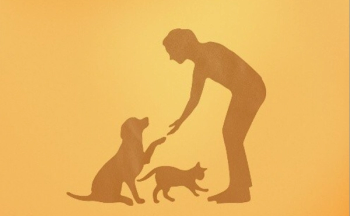
- October 2017
- Volume 1
- Issue 4
Advice Unleashed (October 2017)
Tips and insight from business, financial and practice management experts.
Engaging Clients Through Technology
Sometimes the simplest aphorism is the truest. “Client communication is key,” says Amanda Landis-Hanna, DVM, manager of veterinary outreach for PetSmart Charities. “That’s not really breaking news, but I’ve heard a lot of specialists talk about engaging with their clients through technology. They’re using white boards and drawing or sketching out the condition or the concerns, or making a list of various treatment options,” she says. “I’ve also heard quite a few practitioners mention things like FaceTime to be able to speak with both pet parents at the same time.”
Some specialists have clients videotape them in short clips on the client’s cellphone to make sure the information gets relayed appropriately. “Additionally,” Dr. Landis-Hanna notes, “specialists have been texting or emailing their clients with additional follow-up information to ensure all the details get passed along to Mom and Dad when they get home.”
director of veterinary economics for the American Veterinary Medical Association, says most veterinary practices focus only on profitability when they really need to consider both profitability and the asset turnover index.
“We typically see a lot of focus on the income statement, the profit and loss statement, but very little focus on the balance sheet,” he says. “The asset turnover index is how many sales the practice can generate per dollar of fixed assets it has.” He says the combination of profitability and the asset turnover index is what creates return on investment.
“Because veterinarians have most of their assets in the practice, in the land and buildings, they don’t think it’s necessary to do that,” he says. “But every veterinarian and every business owner has the potential to generate income for themselves and to generate net worth or wealth. So, it’s really important to understand both of those. You don’t want to just generate cash income and not have something to sell at the end.”
The telephone interview is the important first step toward having a face-to-face meeting with your employer, says Gary Vroegindewey, DVM, MSS, DACVPM, director of One Health at Lincoln Memorial University. To be successful, he says, make sure to do a few things before and during the interview.
“First, dress the part. Even though you’re on the phone, dress as though you’re going for a live interview. It puts you in a professional state. You want to make sure you get rid of distractions — doorbells, kids, pets barking. I’d absolutely have your resume there so you can refer to anything the interviewer might ask about. Take notes. It’s also very important to ask who all is on the call, so you know not only who is there, but what role they play in the hiring process.”
How Practice Ownership Can Help You in RetirementKarl Salzsieder, DVM, JD, CVA, owner of Salzsieder & Associates, TPSG, LLC/DBA Total Practice Solutions Group—Northwest, says veterinary practice ownership can be a solid part of a retirement plan. “If you’re semi-retiring and continuing to own your practice, you can slow down your work schedule and get money from your practice as an indefinite return on investment,” he says, “as long as you have the cooperation of your employees, co-partners or shareholders.” For those who plan to retire fully, “then the practice sale is the way you can get money to put into an investment account to help give you longevity of retirement,” Dr. Salzsieder says.
The Healthy Mind Platter
Overwhelmed by daily tasks? There’s a simple visual model to keep on track. “The healthy mind platter is a very useful model for what all veterinarians and animal- related professionals need every day to stay healthy,” says Elizabeth B. Strand, PhD, LCSW, founding director of veterinary social work at the University of Tennessee College of Veterinary Medicine.
What’s on the healthy mind platter? Dr. Strand says exercise is probably the most important item. Also: “sleep, down time (doing nothing — which most veterinarians don’t allow themselves), focus time (using your medical knowledge to solve problems), social time (connecting with others), time in (meditation, journaling, prayer), play time (hobbies) and good food.”
“Every day — every day — a veterinarian has to have all those things to maintain wellness,” she says. “Those are my marching orders.”
Get Real With Your Smartphone
Americans are stuck on their smartphones. “Two-thirds of Americans today own smartphones, and 46 percent say they can’t live without theirs,” says Camala Bailey, CPA, CVA, a financial and practice adviser for veterinary professionals. “Thirty-six percent would choose it over TV, and 87 percent of millennials say it never leaves their side.”
So, how can you manage your smartphone? Bailey says to get real: “Turn it off when you’re talking to people. Don’t be talking while you’re looking at your phone. Ban your phone in the car. If you’re with somebody, have a conversation. If you like to listen to the radio, listen to the radio instead of worrying about the dings on your phone.”
Bailey suggests taking the first 30 minutes of your day to meditate, have some coffee, read the newspaper, relax. “What a great way to start the day, instead of seeing if you have a client email.” And, last but not least, she says, turn your phone off before you get into bed.
Meditation: A Bicep Curl for the Brain
Meditation and mindfulness are key practices for veterinary care providers to adopt in their daily lives, says Marie Holowaychuk, DVM, DACVECC, critical care specialist and veterinary wellness advocate for Critical Care Vet Consulting in Calgary, Alberta, Canada.
“When I think of mindfulness,” she says, “I think of being in the present moment, doing things with intention, on purpose, and really observing with nonjudgmental, open-minded curiosity. That present-minded focus allows us to stop multitasking, which is what we do most of our days, and start monotasking.”
Dr. Holowaychuk sees meditation as a formal practice for mindfulness and how we cultivate mindfulness. “If we find ourselves getting carried away by our thoughts, we bring ourselves back to our breath, back to the present moment. That focus of attention on our breath and on the present moment during the meditation practice is like a bicep curl for the brain every time we do it.”
Articles in this issue
almost 8 years ago
Best in Show: Why Practice Valuation Is Smart Businessalmost 8 years ago
Compassion Fatigue and Burnout: History, Definitions and Assessmentalmost 8 years ago
Confidence Killersalmost 8 years ago
A Profession in Crisisalmost 8 years ago
How to Become a Millionairealmost 8 years ago
Getting to the Root of Client Complaintsalmost 8 years ago
Why - and How - You Should Engage With Millennialsabout 8 years ago
VetPartners Mid-Year Meeting: Stepping Up Our Gameabout 8 years ago
Modern-Day Plague: Understanding the Scope of Veterinary Suicideabout 8 years ago
Why Your Practice Needs a WebsiteNewsletter
From exam room tips to practice management insights, get trusted veterinary news delivered straight to your inbox—subscribe to dvm360.






